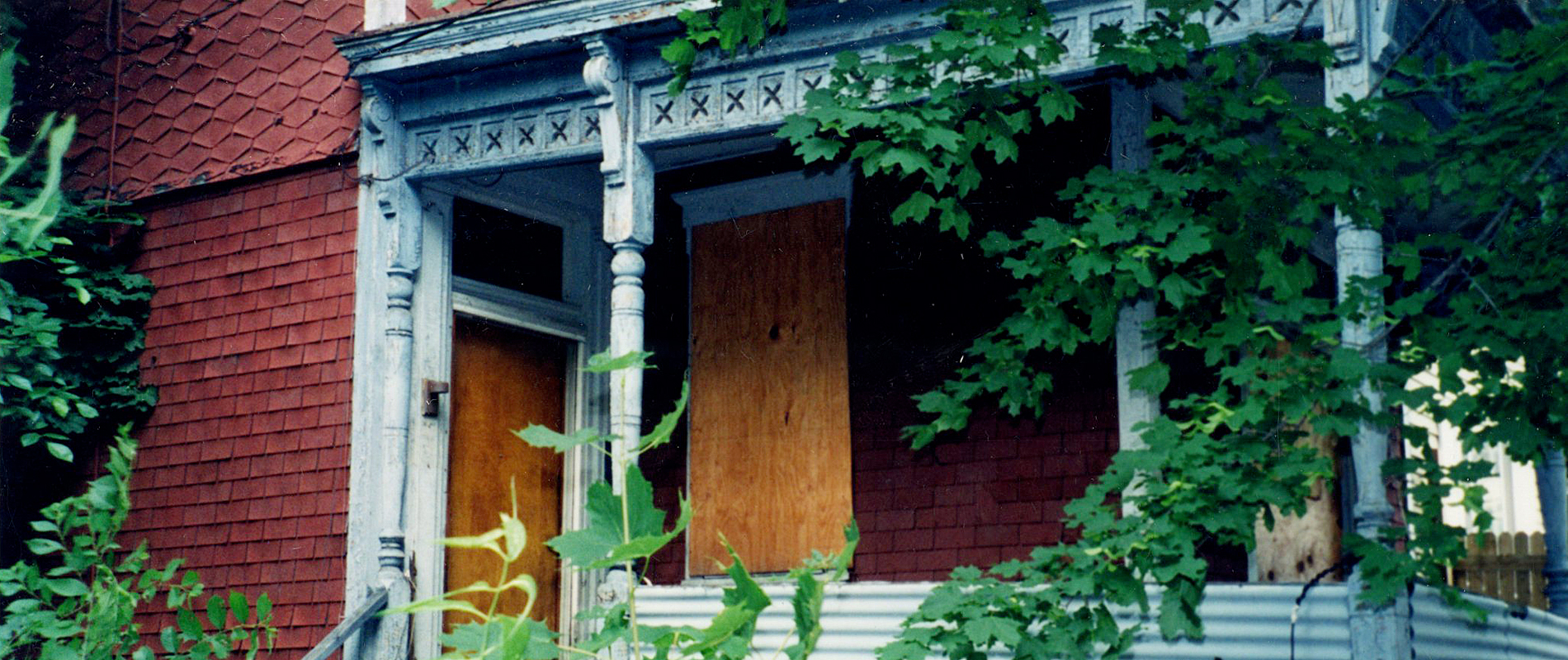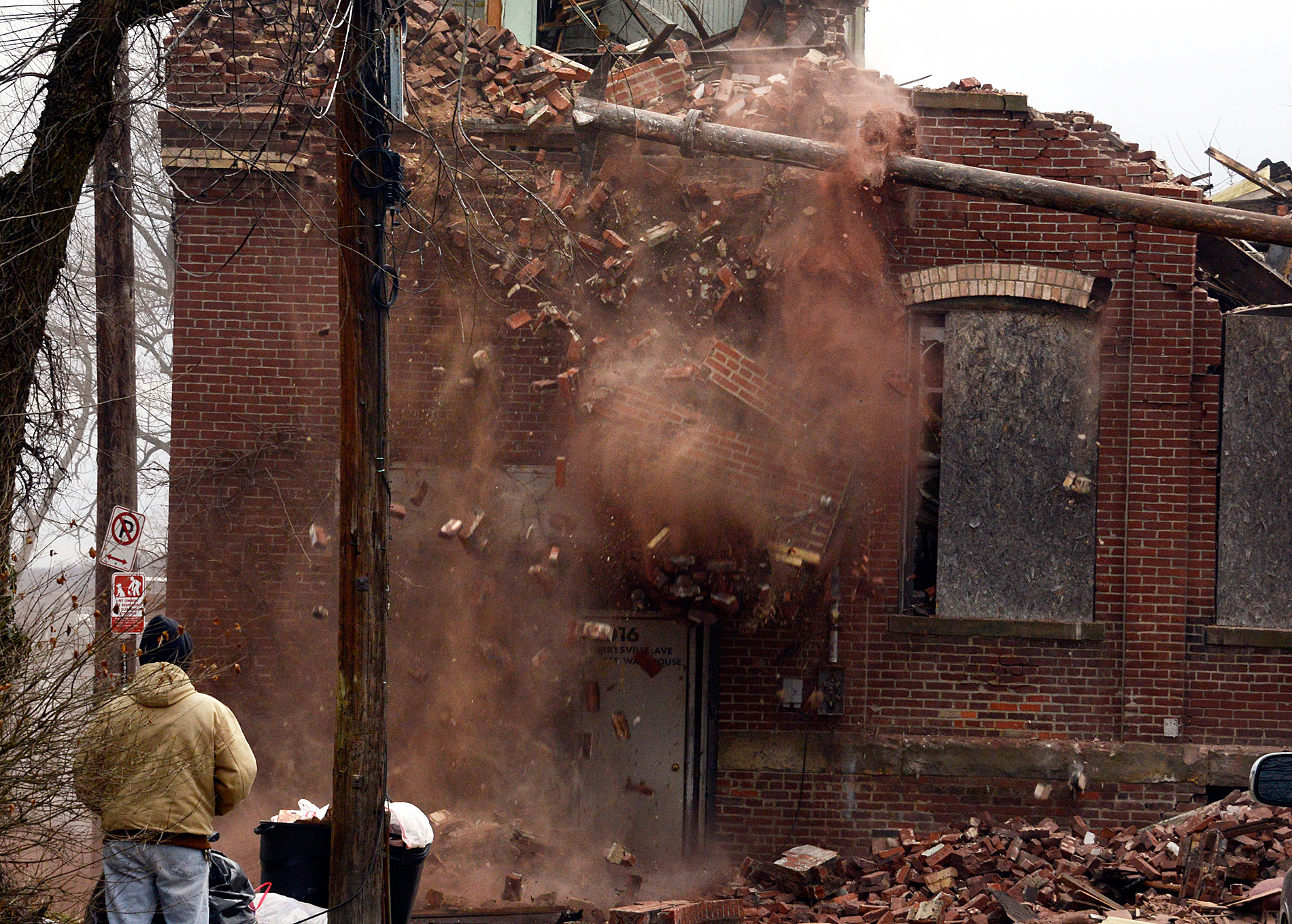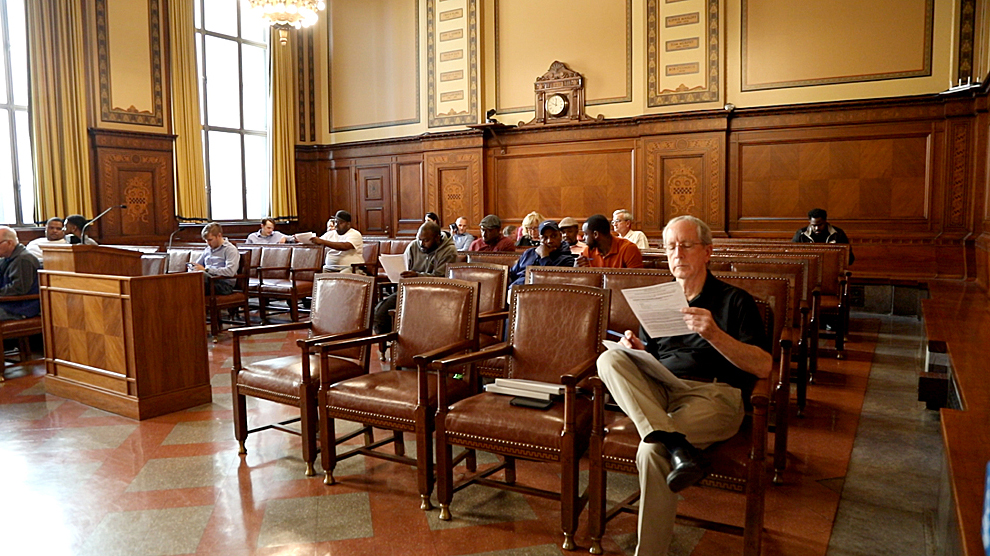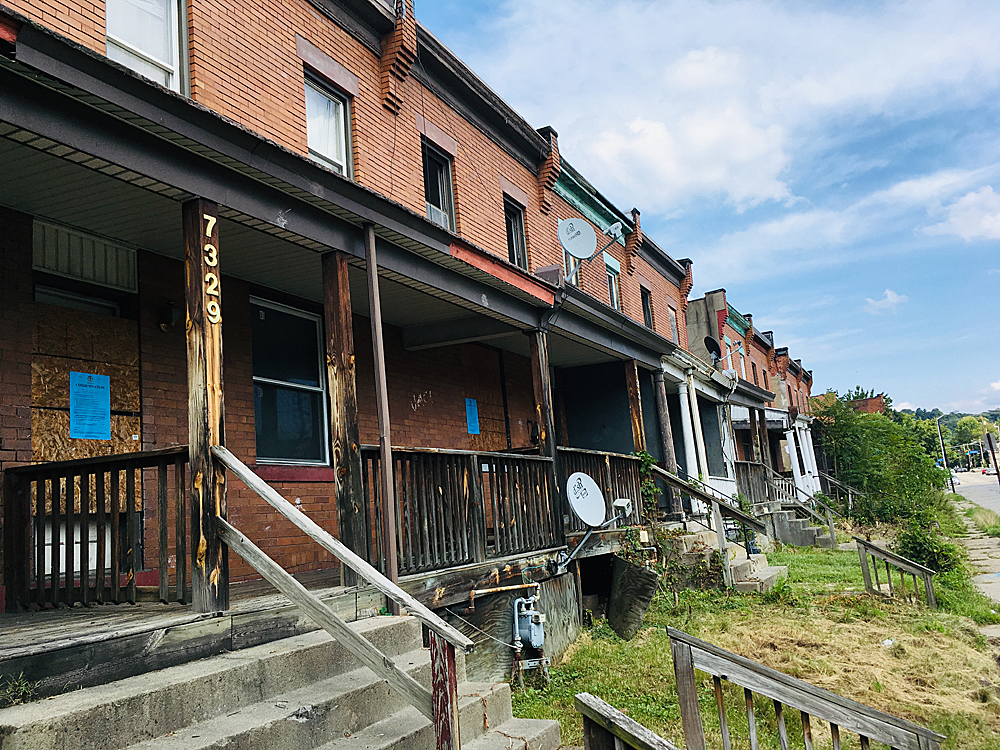Twenty-five years ago the city of Pittsburgh completed its first, and still only, street-by-street historic survey.
In the end, after public meetings to review the proposed register, the city staff created a list of 1,889 individual structures and 15 newly identified historic districts with hundreds more buildings within them.
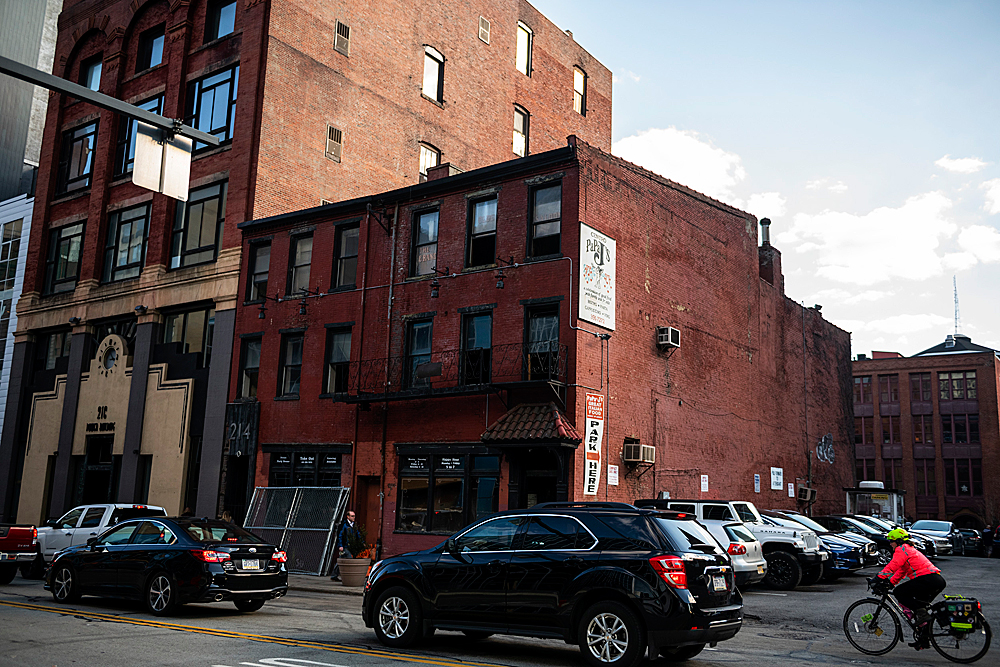
Address: 212 and 214 Boulevard of the Allies, Downtown
Status: Razed
Significance: These were among the last pre-Civil War buildings left Downtown.
History: Former bordello, bar, then restaurant.
Secrets of a vanished building:
A mahogany box with names of a bordello's clients
When the brick buildings at 212 and 214 Boulevard of the Allies were torn down this summer, many lamented the loss of two of the last pre-Civil War buildings left Downtown.
They were plain, Italianate-styled buildings with a rich — and for a time scandalous — history, survivors of a massive fire on the block in 1945, another fire in the 214 building that killed a tenant in 1968, and two Downtown redevelopment efforts.
In 1855, Isaac Brown Parker paid $100 at a sheriff’s sale to buy about 9 acres of a former dairy farm on what was then known as Second Avenue. Parker divided the land up for development.
In 1860 he built two identical, three-story “dwelling houses” on parcels at 212 and 214 Second Avenue. Designed as rooming houses with a bar and restaurant, they catered to the riverboat crews who brought goods to the Monongahela Wharf, and workers who wanted to be close to Downtown factories.
Seventy years later, the buildings became one of the city’s most famous, not-so-secret bordellos.
From 1920 until 1938, the buildings were owned by the Sommerfield Machine & Manufacturing Company, which had a foundry next door at 216-220 Boulevard of the Allies. Mary “Mazie” Cavanaugh — also sometimes called “Dolly” — ran a bordello and boarding house in the 212 building.
She kept track of her customers by having them sign a “member” card that she kept in a mahogany box that she hid behind removable bricks in a wall that formed the back of a built-in cupboard on the second floor.
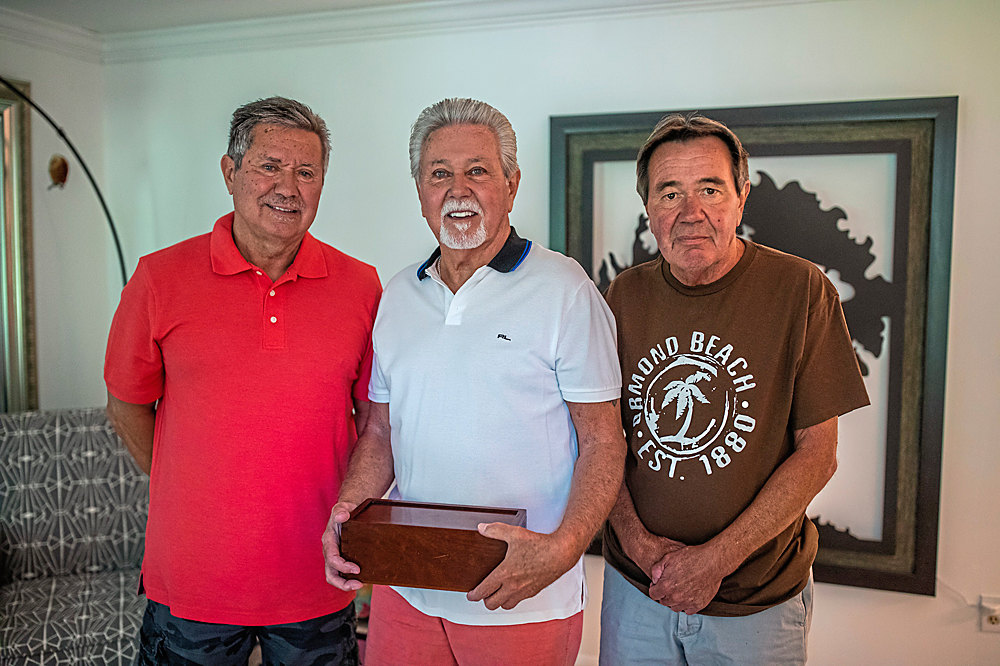
After Cavanaugh’s business floundered, she sold it to Mary and Dane Radosevich, a couple who kept it as a rooming house. It stayed that way until 1978 when the Zielesko brothers bought 212 with plans to turn it into a restaurant.
At the sale closing, Mary Radosevich said, “I want to give you guys something,” Ed Zielesko recalled.
She slid the infamous mahogany box across the table to them, still loaded with the “member” index cards with the names of the Johns who had frequented her bordello. She said that she and her late husband stumbled on the box in Cavanaugh’s second-floor hiding space after they bought the building.
The Zieleskos named their restaurant “Tramps” and they bought and expanded into 214 a few years later. They added to the building’s lore not just by letting customers peak at the mahogany box’s index cards, but inadvertently starting a rumor that their bar back was Mazie Cavanaugh’s headboard.
They found the beautiful mahogany bar back to hold their liquor bottles in Buffalo. But then a customer interested in history “told us he recognized that bar back,” Ed Zielesko said. “He said it was Mary Frick’s headboard from the Frick Mansion.”
That somehow morphed into the story that it had been the headboard of the bordello’s madam.
Tramps had a good run until the early 1990s recession put a dent in the Downtown restaurant business. In 1995 the brothers sold the buildings to Julius and Jacqueline Troiani, who opened Papa J’s Centro there.
The sale did not include the mahogany box — “No, we kept that,” said Ed Zielesko with a smile.

In 2014 — a year after the city shut down Papa J’s because of a gas leak — the Troianis’ son, Michael, sold everything from the buildings he could, from the wooden bar, to stained-glass windows and claw-feet tubs.
Michael Troiani argued that he had to tear the buildings down because the property would be better used for a new commercial building, there was no profitable way to rehabilitate them now, and they were a hazard since they were in such poor condition.
But Matthew Falcone, a member of the city’s Historic Review Commission and president of Preservation Pittsburgh, another local advocacy organization that opposed their demolition, thinks that’s short-sighted.
“Those buildings, again, they speak to our very early history as Pittsburghers,” Mr. Falcone said. “To have them only in photographs and books, I mean it’s a very different experience being able to walk into a bar and … very vividly imagine workers drinking there, or people downtown living there, or riverboat men. At the end of that when those buildings are gone, when all those pieces are sold off and they’re in peoples’ offices and homes, we the public won’t have access to that. You’re taking part of the public good and you’ve privatized it. At its core, it’s a loss to all of us.”
Close
Some of the buildings they identified were well-known architectural touchstones, but most were little known beyond their neighborhoods.
As a result, the list includes the majestic, granite-clad Art Deco Pitt Stadium in North Oakland, as well as the Modern Frederick Scheibler-designed, six-unit brick row house that lent character to an otherwise typical Pittsburgh block in Lincoln-Lemington, and the colorful Queen Anne clapboard home that quietly graced the corner where Grandview Avenue meets the P.J. McCardle Roadway in Mt. Washington.
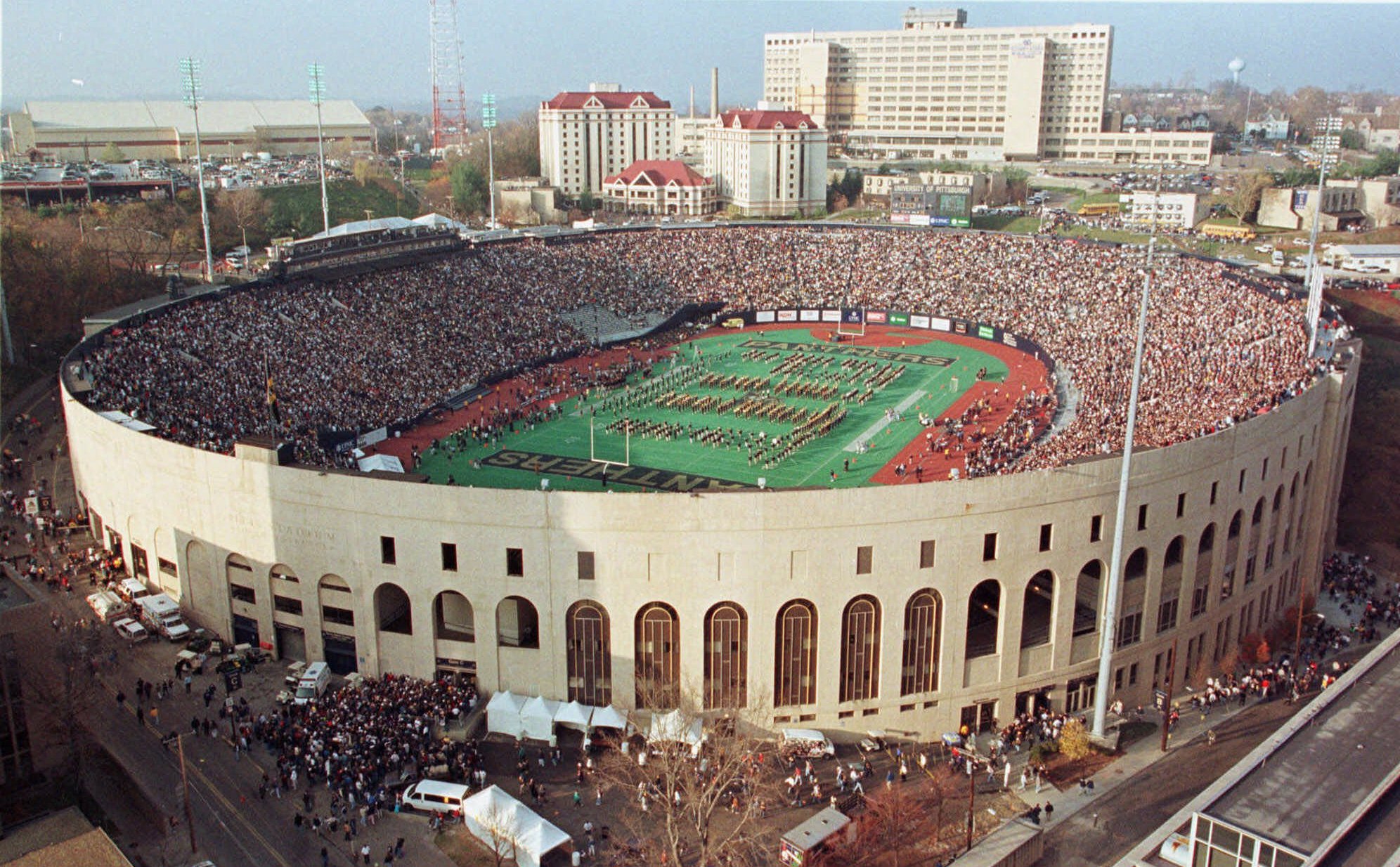
Two of the historic districts identified included one of the last intact pieces of the Hill District commercial strip in the 1800 block of Webster Avenue, as well as the cozy, stone-clad Queen Anne rowhouses of the 200 block of Dinwiddie Street in Crawford-Roberts.
Though the register did not give any of them historic protection, it declared that those four buildings and two historic districts — and all the other structures the register identified — were “significant” to the city and that “that these neighborhoods and buildings should be preserved intact, and treated sensitively in the planning and execution of public and private development projects.”
Despite the work that went into it and the unanimous adoption of the register in 1994 as a formal document by the city’s historic review commission, planning commission and city council, that direction was never fulfilled. All four of those buildings are gone, and so many buildings in those two historic districts are now gone that they likely would never be granted formal historic protection again.
And that’s just a small slice of the devastation.

Buildings
Bridges
Walls
Memorials
A Post-Gazette investigation found that 299 of those structures are gone, or nearly 16% of the individual structures identified — with many more likely to fall in the near future.
“I’m sorry to hear that,” said John DeSantis, the Pittsburgh preservationist who came up with the idea for the register when he was chair of the Historic Review Commission in 1990. “Especially when you consider this: Every single building — no exception — on that list was on that list for a reason: architectural, historic, added because something happened there, or a historically important figure lived there, or it was a great work of engineering.”
The loss of register-listed buildings is endemic of an even larger loss of similar structures across the city. Those losses have changed the character of the neighborhoods, from the destruction of individual Queen Anne row houses that have left gap-toothed grins along Homewood’s streets, to the loss of dozens of grand, Perrysville Avenue Colonial, Italianate and Romanesque homes on the North Side, to the demolition of dozens of distinctive, pre-1900 commercial buildings Downtown that have slowly diluted the living history of the city’s most visited neighborhood.
“If out of a city of [110,000] structures, you are going to say there are a couple thousand here that we really need to keep, it should be our collective ability to do that,” said Mr. DeSantis. “And shame on us that we did not.”
BUILDINGS LOST TO NEGLECT
So who or what is responsible for all that architectural carnage?
Forty-two of the 299 buildings that have been taken down were demolished to make way for a new development, primarily in the city’s major commercial neighborhoods in Downtown, Oakland and East Liberty.
That count could rise. The city’s recent commercial revitalization, particularly Downtown, has put a dozen more register-listed buildings in the eye of the wrecking ball to make way for possible new developments.
Some of those proposed demolitions have been hotly debated, including a group of register-listed buildings near the Boulevard of the Allies and Market Street owned by the Troiani family. Two of the last pre-Civil War buildings remaining Downtown — at 212 and 214 Boulevard of the Allies — were demolished in June. The family is seeking to tear down another register building on the same block that used to be home to Froggy’s bar.
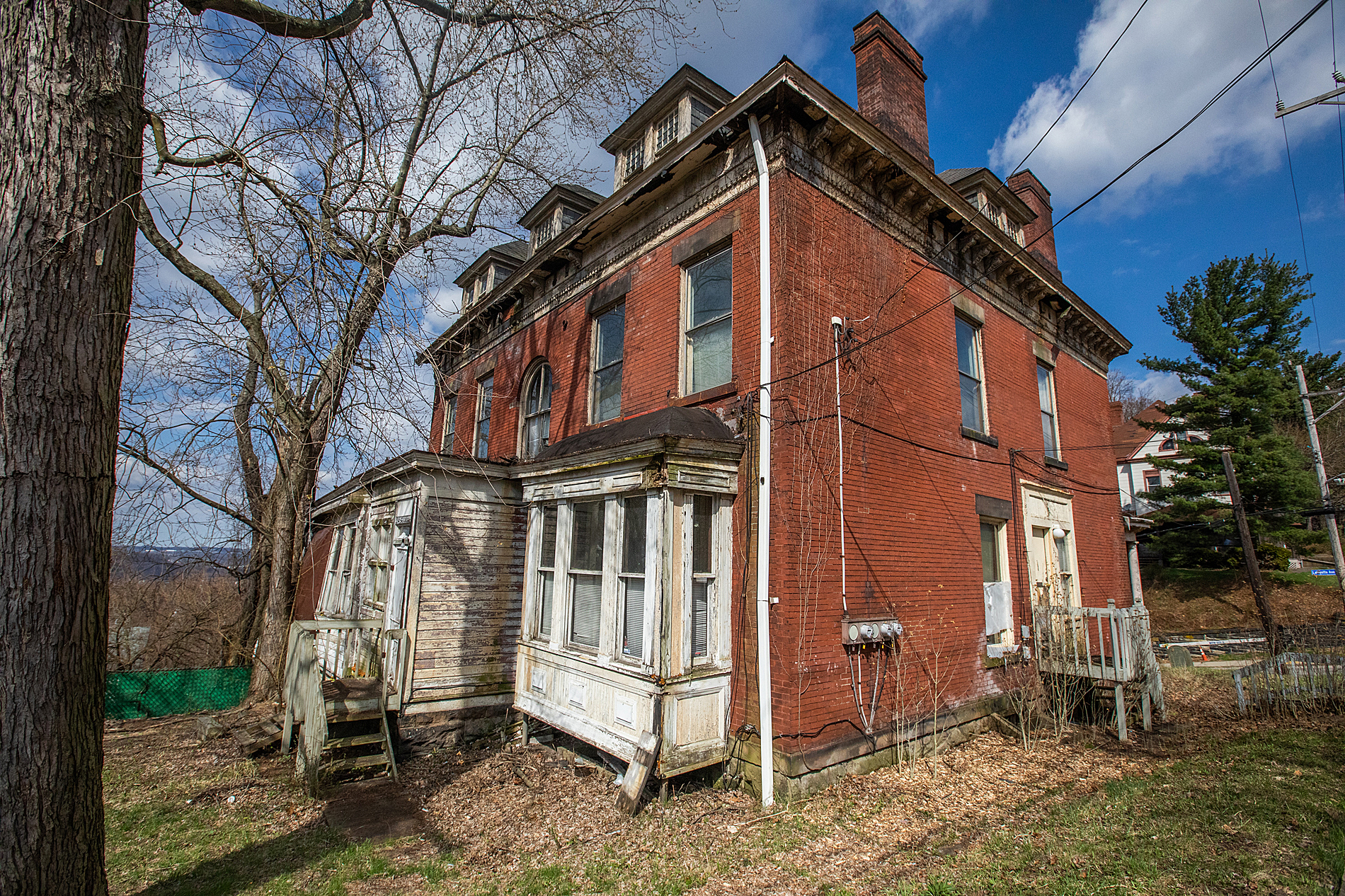
Address: 300 and 320 Lafayette Ave., Fineview
Status: One renovated, one condemned
Significance: Both homes are in an intact block, mostly of Queen Anne architecture, from the 1870s.
A tale of two houses with a fine view and a history of neglect:
Two homes 150 feet apart in Fineview have suffered very different fates.
Two Lafayette Avenue homes in Fineview sit just 150 feet, and both were included in the city’s 1994 Pittsburgh Register of Historic Places.
Their fates have diverged though, with one getting a new owner and renovation, and the other possibly headed to demolition.
The home at 300 Lafayette, a 130-year-old Queen Anne-style wood frame home, retained all its gingerbread woodwork even as a tree grew into one side of the home and roof leaks damaged the interior. The city issued a series of building violations before condemning it in 2013, deeming it unsafe to live in unless someone fixed its numerous problems.
Its owner from 1970 to 2016, Dennis Berecky, 86, lived across the street, continued to pay the taxes — though they were regularly late and the home ended up on the sheriff’s sale list in 2006.
The home was last occupied 30 years ago when a renter angry over being evicted set a fire inside, Mr. Berecky said.
But the home got a lifeline in 2016 when the online site, ThisOldHouse.com, featured it in an article as a possible renovation project. That caught the attention of Chris Waraks, owner of the Mr. Renovation company, who showed it to investor clients he had worked with before, Dana and Tom Hussar.
“We liked it immediately,” said Dana Hussar.
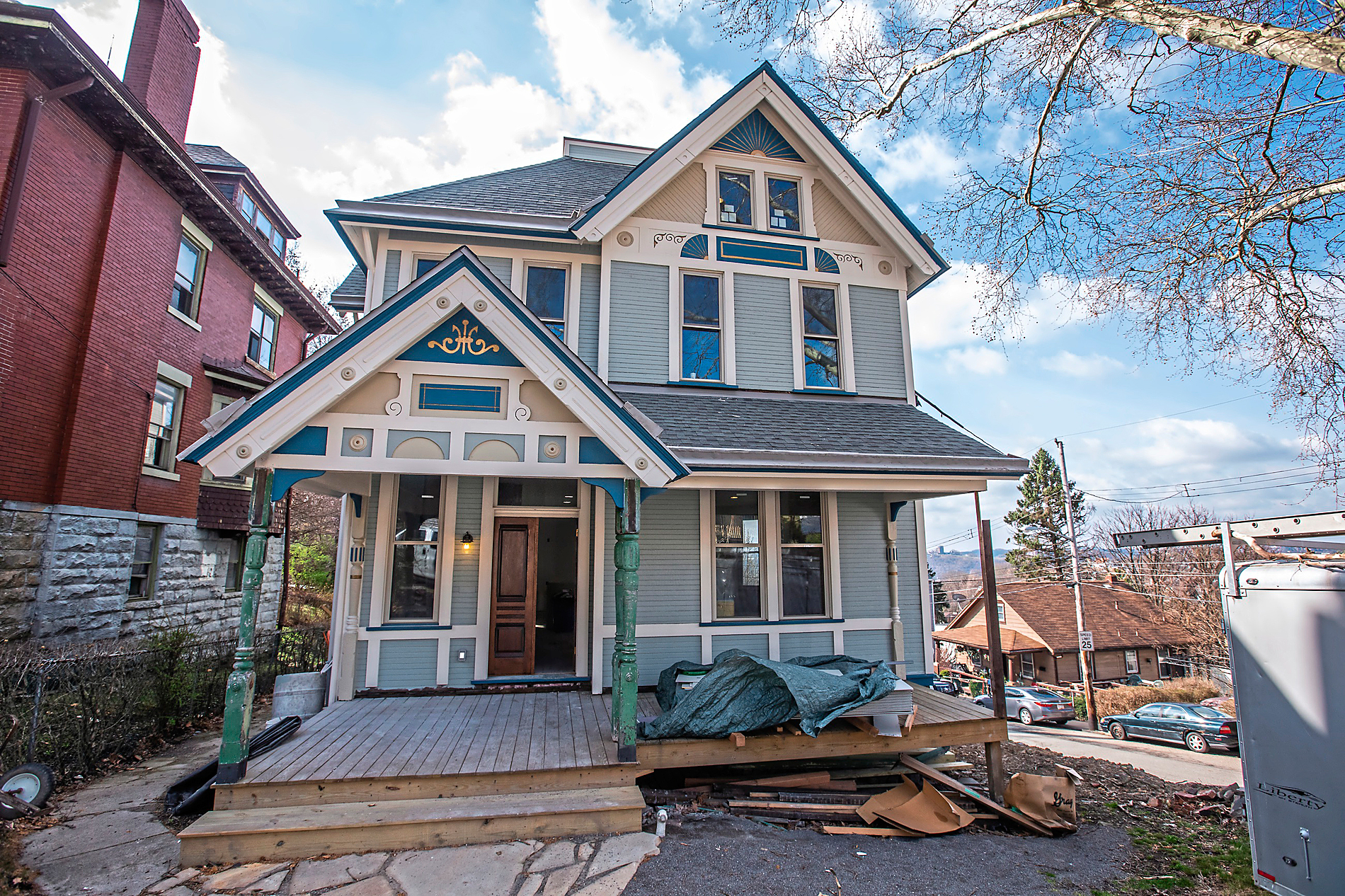
The couple paid the asking price — $15,000 – and began working with Mr. Waraks, first, just to stabilize the place.
“This has been a challenge. It sat for 32 years,” Mr. Waraks said.
Six-figures worth of renovation later, the home finally went up for sale for $435,000 in July, complete with a new rooftop deck that provides a stunning view of the river valley around Downtown.
Just across the street, 320 Lafayette is a 120-year-old Colonial-style red brick home that despite its deterioration is still a striking presence with its pedimented third-story windows overlooking a porch that spans the entire front of the large home. It was split into five apartments at one time; now there are three units.
Like Mr. Berecky, the owner of 320 Lafayette since 1989, Shirley Atkins, was frequently behind on her taxes. She said for part of the last 30 years she had a renter for one of the units, while she lived in the other two.
When she lost her renter about a decade ago she stopped paying her property taxes altogether. There is now at least $23,000 owed in back taxes on the property, according to liens and a court case filed by the city, county and school district. For the same reason that Ms. Atkins could not pay the taxes, she could not keep up with the mounting maintenance problems for such a large, old home.
“There were issues with the house then, when I bought the home,” said Ms. Atkins, 86, a retired University of Pittsburgh professor of human development, who now lives with friends in an apartment in the Roosevelt Arms apartment building Downtown. She moved out of the home in 2016 after part of her left leg was amputated below the knee because of health issues.
As at 300 Lafayette, the lack of maintenance eventually caught the attention of the city’s building inspectors, who first began issuing notices of building violations in 2016, resulting in the city condemning the home in 2017.

Ms. Atkins said she’d like to sell the home, and get out from under the taxes and maintenance she can’t afford to pay now.
“It’s not a priority for me know,” she said. “Why would I put myself into so much debt [to renovate it] at this point in my life?”
Why has 300 Lafayette been renovated, but 320 Lafayette could soon be demolished?
“There’s a simple answer,” Mr. Waraks said. “If that one [320 Lafayette] had all the back taxes paid off like this one [at 300 Lafayette] it might be possible” to fix up. “People who do this [renovation work] don’t want to deal with” back taxes.
Ms. Hussar agreed, saying he would never have bought 300 Lafayette had there been taxes owed on it.
Mr. Waraks said he and other real estate investors in the city have tried to target properties like 320 Lafayette when they’re already behind on taxes, but not so far gone structurally that they could not be renovated. They ask the city to put them through the treasurer’s sale process, so that the back taxes could be eliminated and make the finances work. But it often takes too long.
“We’ve sat down with the city and tried to get them to speed up the process,” he said. “We haven’t gotten anywhere.”
It’s a shame, Mr. Waraks said, “because it is beautiful. But who’s going to put in the money you need now to fix it up?”
Close
Some losses of register buildings belonged to universities. The University of Pittsburgh has taken down seven of the buildings in the register, including Pitt Stadium, in Oakland. Carnegie Mellon University has torn down one Queen Anne-style home and bought three others listed in the register in the small, residential neighborhood east of South Craig Street near Forbes Avenue, a move that residents believe will lead to their demise as well. Point Park has taken down two buildings Downtown and has demolished the old Playhouse building in Oakland.
But the biggest culprit in the loss of buildings has been neglect, first by the former building owners who abandoned them and — more important — the city of Pittsburgh.
Through five different mayoral administrations — from Sophie Masloff to current mayor Bill Peduto — since the register was adopted, the city has allowed many buildings on the list to slowly deteriorate to the point where they had to be torn down because they have become a hazard; many after the city bought them for back taxes and allowed them to deteriorate even further.
No one owned more demolished buildings on the register’s list when they were torn down than the city of Pittsburgh over the last 25 years, with 29 buildings. The Urban Redevelopment Authority, a branch of city government, took down nine other buildings in the register, and the city Housing Authority three more, bringing the total to 41 buildings on the list that were taken down by the city or a city-related agency that owned them.
The city also took down at least another 40 buildings it did not own because absentee owners had allowed the buildings to become so unsafe that the city determined they had become a public health risk.
The city may have taken down many other buildings it did not own. Because of decades of problems with its paper-based demolition records, the city could not provide demolition-related documents — including notices of demolition liens — for 117 demolished buildings, or 40% of the buildings in the register that are now gone.
“We’re losing neighborhoods because of the city’s past administrations’ approach to blight. Regardless if it’s historic or not, we’re losing neighborhoods,” said Ernie Hogan, Pittsburgh Community Reinvestment Group executive director and former chair of the city’s Historic Review Commission.
Some of those demolished buildings that the city has no permits for may very well have been taken down without a permit, said Maura Kennedy, the city’s director of Permits, Licenses and Inspections.
“Unfortunately that’s true” that buildings are sometimes taken down without a permit, said Ms. Kennedy, who was brought to Pittsburgh to oversee modernization of the department, after she did similar work in Philadelphia.
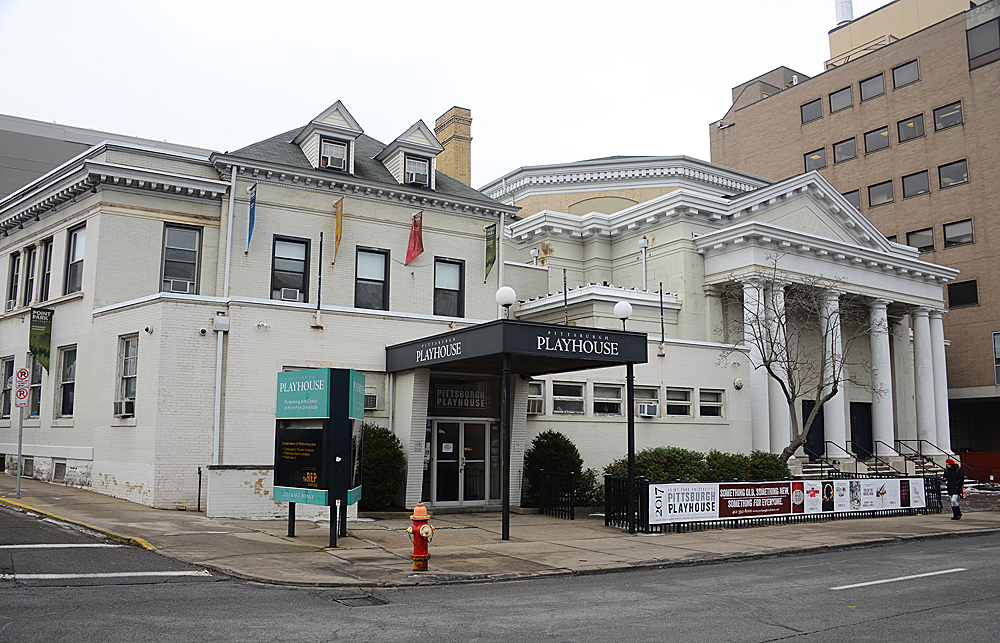
Mr. Hogan said when he was on the Historic Review Commission, he once helped stop the demolition of a home in the Manchester Historic District after the demolition operator failed to take out a permit. He said he got a phone call from a concerned neighbor as equipment was about to start tearing the home down.
The fact that a permit is not taken out is not only dangerous — city inspectors ensure that utilities are properly turned off and asbestos and other possible hazardous issues are dealt with before demolition is allowed — it also removes one significant barrier from a historic building being torn down.
Even though many of the demolitions with no permits may not have been prevented, historic advocates say it is often a formal demolition request that gets neighbors to finally take an interest in a historic property, sometimes preventing its destruction.
A FAMILIAR STORY
While some of the buildings on the list fell despite a public outcry — such as the Brashear Factory in Perry South or St. Nicholas Church in Troy Hill — most were torn down as quietly as they existed, without a single objection.
The all-too-common pattern: The longtime owner died or had to move and stopped paying property taxes; the home couldn’t be sold and became abandoned; after a decade or more of no maintenance the home deteriorated; eventually a neighbor complained to the city or council representative about the deterioration or open front door; the city issued a series of violations to the absent owner that escalated into a condemnation order, meaning no one could live in it; with no response over a couple of years, the home’s condition got so dangerous that the city paid to have the building torn down.
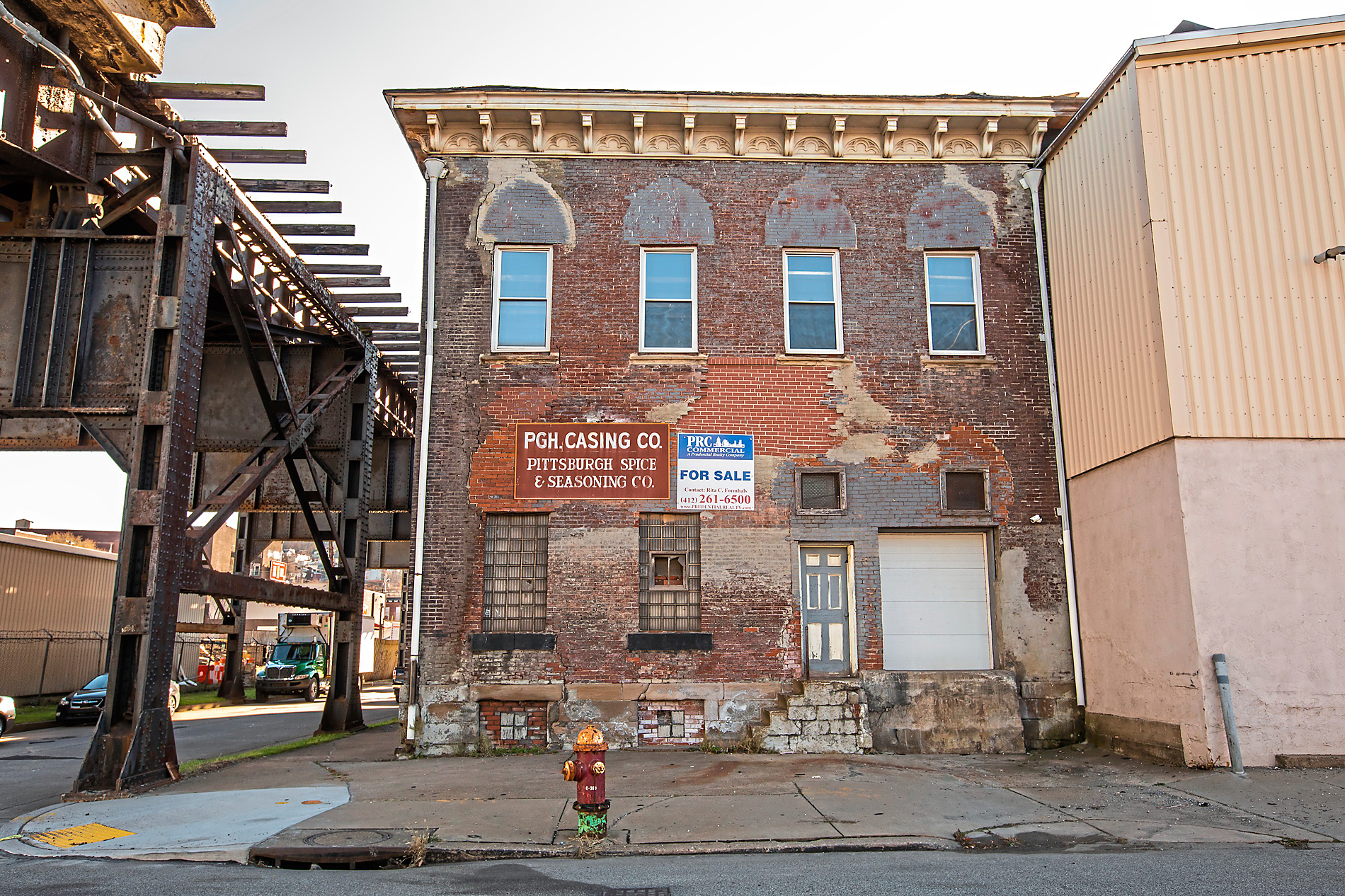
Address: 102 33rd St., Strip District
Status: For sale
Significance: May have been steel magnate Andrew Carnegie's first office building.
The Carnegie Building:
A long forgotten, nondescript Strip District building may have been Andrew Carnegie's first office building
The disheveled two-story brick building at the corner of 33rd and Smallman streets has little left of the ornamental stone and woodwork that once outlined its doors and windows, ornamentation that might have made you look twice at the building.
If you look up, there are still the scrolled wooden brackets at the roofline on the original front half of the building.
But beyond that, there is nothing that would make anyone wonder, who built that building?
The answer, and the reason it is included in the Pittsburgh Register of Historic Places, is Andrew Carnegie.
The obscure building at 102 33rd St., nestled under a railroad trestle that seems to be designed to hide it, was built by Carnegie and his early partners as an off-mill-site office building to run his then-fledgling iron and steel empire.
When the first part of the building was built, possibly as early as the mid-1870s, it would have been in a convenient location for Carnegie and his partner, Henry Phipps, just a short two block walk away from their Union Iron Mill works located on the banks of the Allegheny River.

Historians who have written about Carnegie were thrilled to hear the building, which might be the first such site Carnegie built, was still there.
David Nasaw, author of the authoritative 2006 biography of Carnegie, said he was amazed that it had survived all these years.
“Often it’s the least valuable pieces of real estate that survive,” he said.
It not only outlasted the Union Iron mill itself — which was finally fully dismantled in the 1990s — but even the much grander, 13-story office tower that Carnegie built in Downtown in 1893 when he was one of the world’s richest men. That building was torn down in 1952 to make way for an expansion of Kaufmann’s Department Store. In addition, the home Carnegie lived in on the North Side, and the not-so-opulent building he lived in in Point Breeze when he became rich, are also gone.
All of which makes the survival of the Union Iron Mill office building that much more significant, said Ken Kobus, author of the 2016 book, “City of Steel: How Pittsburgh Became the World’s Steelmaking Capital during the Carnegie Era.”
“Just about everywhere else where [Carnegie] would have done business — the Carnegie Building, his homes — they’re all gone,” said Mr. Kobus, himself a former steelworker from Bethel Park.
What saved the building was that nearly a century ago someone thought the building — located not far from Pittsburgh’s thriving wholesale food center in the Strip District — could be turned into one giant refrigerator.
In 1937, Anthony Caquatto and Lorenzo Sartore bought the building from the Carnegie Steel Co. and were allowed to line the walls and ceiling with tile to insulate it so they could store sausage and food casings. They ran the business until selling it in 1967 to Mario and Anna Mancini, whose company, Pittsburgh Casing Co., is now known as Pittsburgh Spice & Seasoning Co. and is run by their son, Greg, and his wife, Therese.
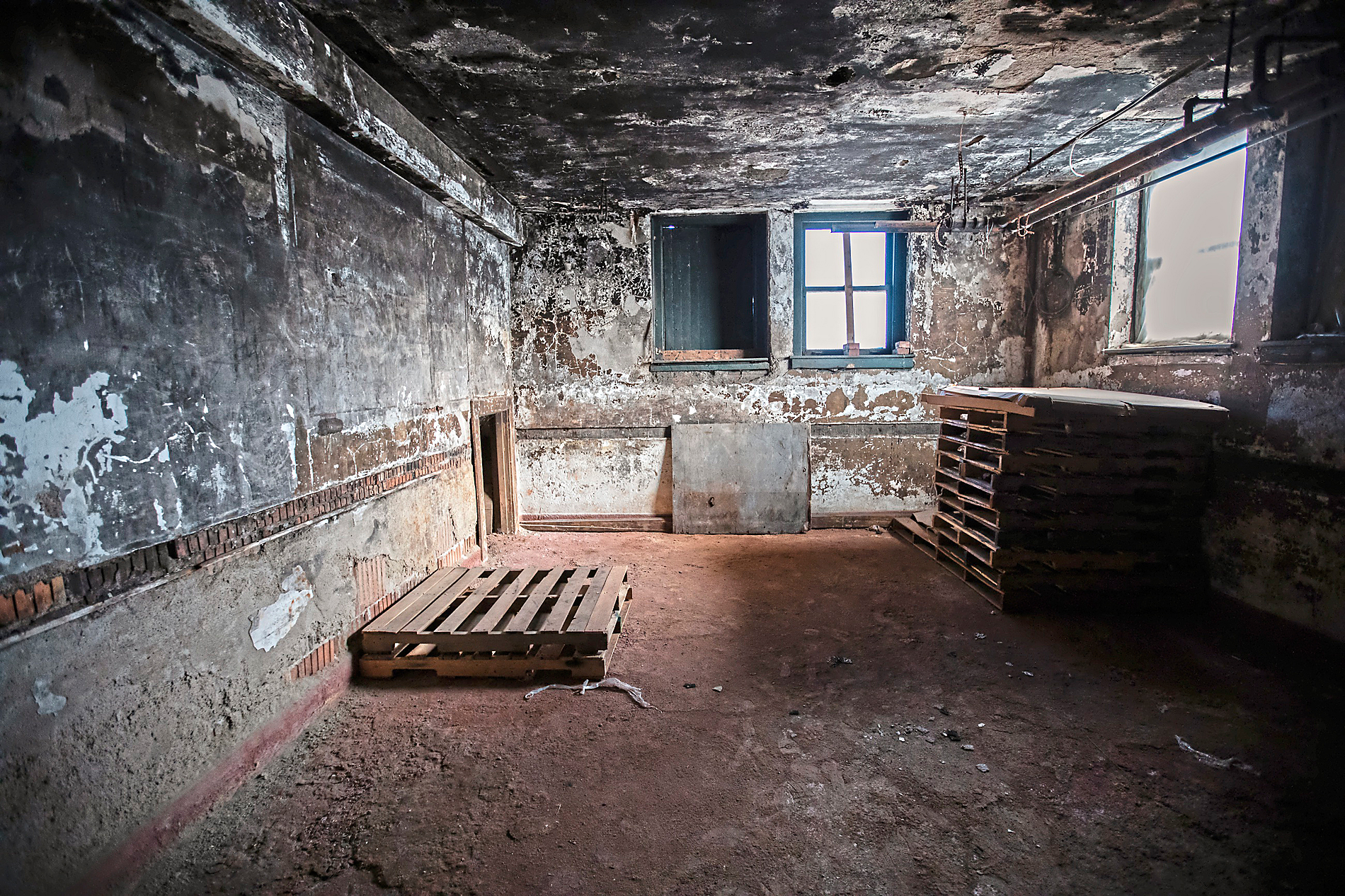
Greg Mancini said for a time there was a marker on the Smallman Street curb outside the building that said the building was “Carnegie’s first office building.” But someone ran the sign over and it hasn’t been replaced, he said.
Mr. Mancini said he has long been fascinated by the building and its past and on a tour of the building with a reporter he pointed out some of the interior details that still hearken to its days as a prominent office of an up-and-coming iron – and then steel – company. During the tour he pointed out touches such as the finely crafted wooden banisters, to portions of the original tin ceiling that can be seen through the deteriorating drop ceiling, a view that shows where a grand lighting fixture may have once hung in what might have been the main executive office on the Smallman Street side of the building facing what was the riverside mill.
On all three floors, Carnegie had built into a wall a safe with a heavy metal door. Mr. Mancini had long been fascinated with what might be in the 2nd floor safe, which he was unable to open, and before he finally moved out in 2017, he busted a hole in the side wall of the safe to get in.
“I just had to know what was in there,” he said.
In the drawers of the safe there were reams of Pittsburgh Casing Co. documents, mostly balance sheets and the like. But in one drawer he found a key with a tag on its that reads: “Carnegie Steel.” It now sits in a frame in his new company headquarters, in another reclaimed building, this time the former Schaeffer Elementary School building in Crafton Heights.
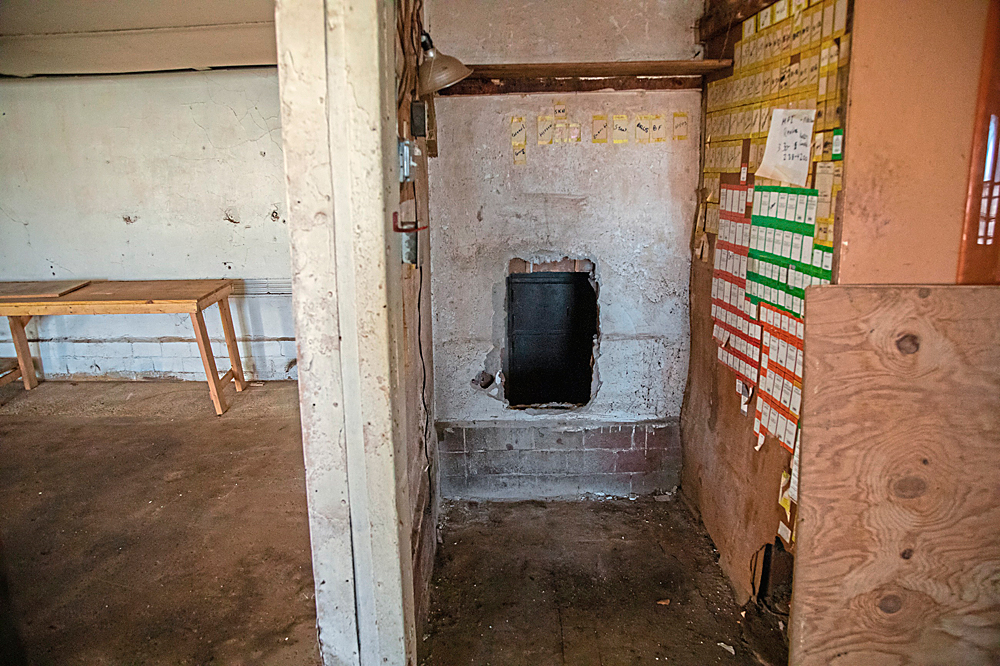
The former Union Iron Mills building in the Strip District is now for sale, which has Ron Baraff worried.
“There’s so little of the fabric left of the historic Strip District. I’m concerned it will be torn down to make way for another condo building in the Strip,” said Mr. Baraff, the director of historic resources and facilities for Rivers of Steel, a nonprofit group the celebrates the city’s industrial legacy.
As disheveled as the building is, that would be a shame, Mr. Baraff said.
“Buildings like this are visual and physical placemakers of what the city was and the role the neighborhoods played in our industrial past,” he said. “To wipe it all away is just a mistake.”
Close
“We’re familiar with the story,” said Arthur Ziegler, president of the Pittsburgh History & Landmarks Foundation, which has rehabilitated buildings that were in similar shape before PHLF rescued them. “You let a building go, it goes.”
Of the 299 structures and buildings in the register that are now gone, at least 110 were behind on tax payments when they were torn down. Most of those were likely torn down by the city.
Falling behind on taxes, then, serves as something of an early-warning sign for a building’s potential demolition.
Historic buildings that have been destroyed
Of the 1,595 structures remaining from the original register list, 70 are at least two years behind on taxes. Another 47 already have been condemned.
Buildings from the register have been lost across the city. But the destruction is concentrated in two types of neighborhoods: Struggling communities such as Hazelwood, Homewood, Perry South and Allentown that were hit hardest with the decline of the steel industry; and dynamic commercial areas in neighborhoods such as Downtown, Oakland and East Liberty that have seen major players bring big money and big ideas in, often at the expense of older buildings.
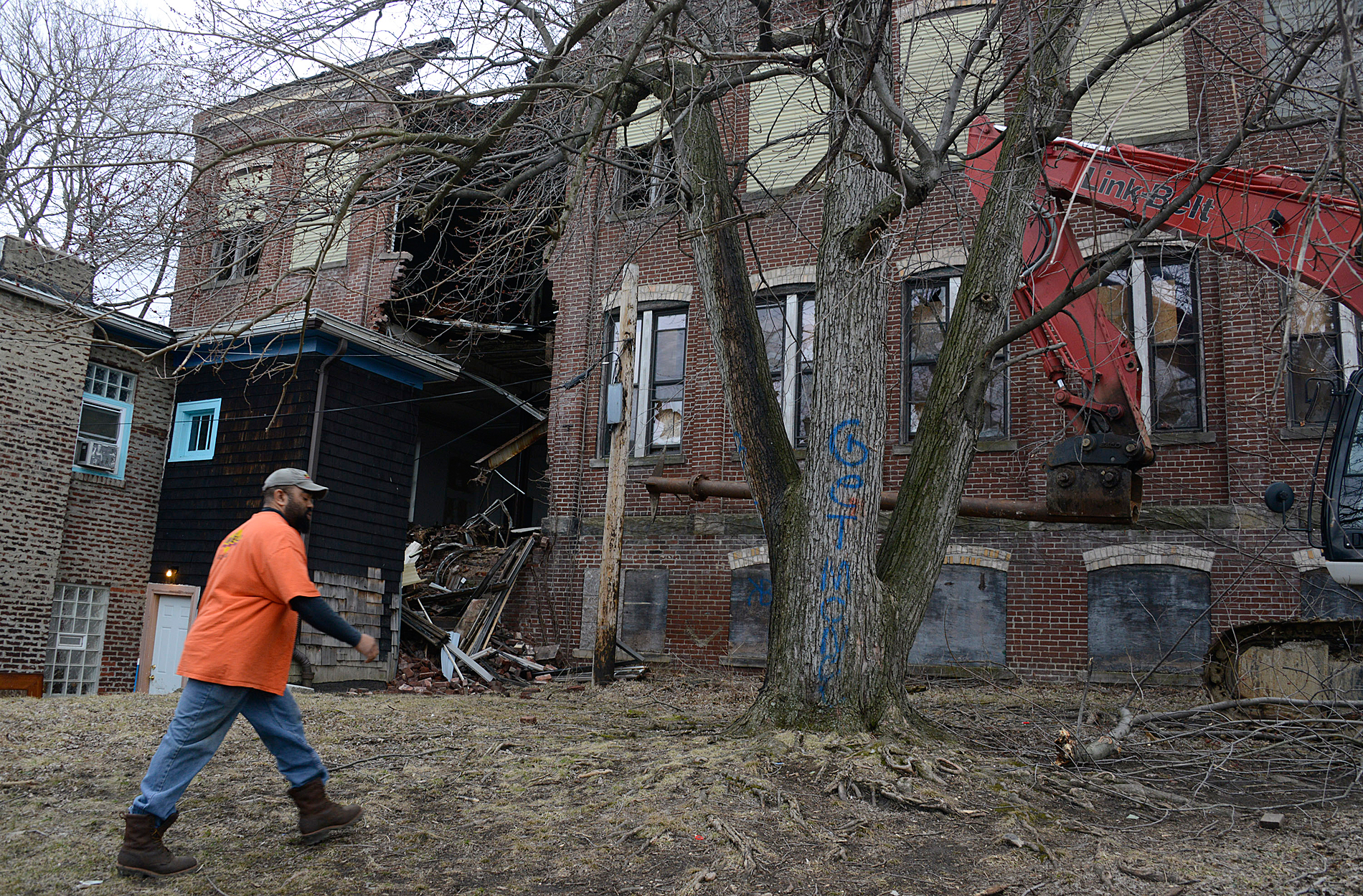
One insidious problem with demolishing buildings in struggling neighborhoods where so many register buildings were torn down, said Mr. DeSantis, is that the lots they stood on tend to stay vacant.
“It’s bad enough when important buildings are destroyed in order to be replaced by the latest big box store or the latest fast food joint,” he said. “It’s even worse in some ways when they are simply neglected to the point of collapse, then demolished and a vacant weed lot replaces them. And a vacant weed lot will remain a vacant weed lot forever. We don’t typically see those vacant lots get rebuilt as anything, let along something constructive to the community.”
Of the 299 register structures that have been taken down, 128 remain vacant lots, some of them decades after demolition. The overwhelming majority of the structures — at least 60% — were taken down by the city.
Mr. Hogan said he blames the city for a policy that makes demolition “the cheapest solution to the city” in eliminating “blight” when it’s faced with a deteriorating building.
“Although it’s really not eliminating blight,” he said, “it’s eliminating a structure when they demo something. Because just like they didn’t have the resources to take care of the vacant building and board it and mow the grass, they don’t have the resources once they demolish the building to take care of the vacant lot.”
Lots staying vacant can happen even to sites of well-known buildings in dynamic neighborhoods, such as the Syria Mosque in Oakland, which was demolished in 1991 but remains a parking lot nearly three decades later, and an even more recent loss.
“That’s what drives people mad about the Civic Arena site,” Matthew Craig, executive director of Young Preservationists Association of Pittsburgh, an advocacy group, said of the demolition of the arena in 2010. “All these years later, it’s still just a parking lot. So I do think that those are parts that make people feel kind of ripped off.”
Download data
The database of historic structures can be downloaded in these formats (click to download):
MS Excel [204.5K] (for personal viewing)
SQL [417K] (for databases)
JSON [692K] (for programming)
CSV [382K] (for databases)
The city currently has more than 1,500 buildings on its condemnation list, more than half of them listed since Jan.1, 2018.
Ms. Kennedy said the city is trying to be thoughtful with its demolitions.
“The city is in no way looking to demolish every structure on the condemnation list,” she said. “We really want to preserve the community fabric of our neighborhoods. Demolition can definitely be a safety solution. It can also detract from that fabric. So we definitely want to be strategic in the demolitions that we do as a city.”
REGISTER WAS SHELVED
Mr. DeSantis said he was trying to be strategic, too, when he proposed the register in 1990.
After a series of raucous public debates over historic nominations in the city in the late 1980s, Mr. DeSantis said he realized that the city had set itself up for conflict because it had very few historic districts and individually designated buildings. But preservation-minded citizens quickly would nominate worthy buildings or parts of neighborhoods if they heard a developer was considering demolition to make way for new structures.
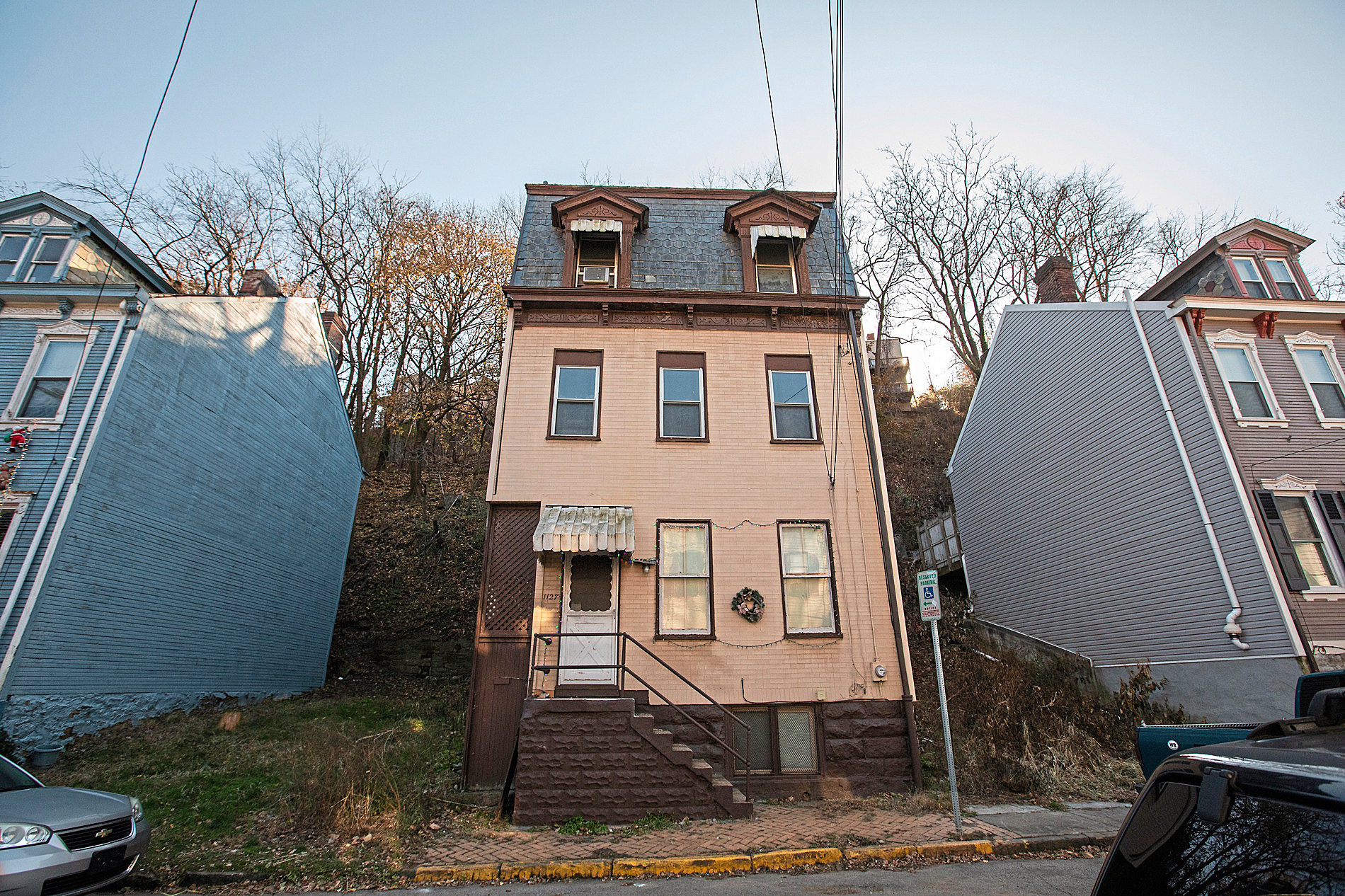
Address: 1100 and 1200 blocks of Voskamp Street, Spring Garden
Status: Some houses have been demolished.
Significance: 1870s and 1880s Italianate homes along a street laid out in 1860.
Historic homes have getting demolished on the off-the-beaten-path Voskamp Street
The off-the-beaten-path Voskamp Street in Spring Garden is rich in architectural treasures.
“Historic homes along Voskamp Street and High Street with Italianate architecture offer strong opportunities for preservation,” the city of Pittsburgh noted in the Spring Garden section of its 2012 Cultural Heritage Plan.
The city’s 1994 Pittsburgh Register of Historic Places survey found much worth preserving there, too.
The register identified 12 buildings in the 1100 and 1200 blocks of Voskamp. In 1994, much of the urban canyon of 1870s and 1880s Italianate homes on both sides of the narrow street remained intact. It had been laid out in 1860 by the Voegtly family when it was part of Allegheny City.
The authors of both the register and the Heritage Plan recommended preserving the buildings they identified.
But little has been done to follow their recommendations.
In 1994, just after the city approved the register as an official document, three homes noted in the register were demolished, two of them by the city. And then, at about the time city researchers were exploring Spring Garden in 2010 and 2011 for the Heritage Plan, the city tore down four more register homes. In all, seven of the 12 homes identified in the register are now gone. And another six homes in the same blocks — which, although not included in the register, contribute to what’s left of the urban canyon — are on the city’s condemnation list.
Longtime neighbors said that some of the homes had become hazards and may have had to come down. But some in the neighborhood said that often when the city puts a building on a path to demolition, it gets torn down even if someone might be able to save it.

“They just wanted to get rid of it,” said Joe Valorie, 60, about 1112 Voskamp St., which the city demolished in 2010. “I wanted to save it,” said the 34-year resident of the street, who previously owned the home, only to lose it to foreclosure. “It wouldn’t have taken much.”
His neighbor across the street, Marian Miksic, 93, has lived in her home on Voskamp for nearly 70 years. Though she is one of those who thinks some of the homes had to be demolished, 1112 Voskamp was not one of them.
“Now, that one could have been saved,” she said, noting it still had original wood ornamentation over its windows and doors and structurally appeared worthy of renovation. “You’d think [the city] would be willing to sell these houses so people could build something back up instead of tearing them down.”
That’s what Mr. Valorie — whose wife and adult sons own multiple homes along the street — said he was trying to do in 2010. He had reached out to the then-owner, Affordable Housing Revocable Trust No. 1, a company out of Van Buren, Ariz., that was trying to sell the home.
“I was in touch with the guys from [Arizona who owned the home] trying to buy it when they took it down,” he said.
It was a shock when the home, and another three-story home at the back of the property on Wesler Way, came down in early March, 2010, he said.
“When they took it down, it kind of hurt,” he said. “I had owned it, had lived in it, and the inside was original. It had the pocket doors, the marble mantles, the high ceilings.”

When told of the situation with 1112 Voskamp, Maura Kennedy, director of the city’s Permits, Licensing and Inspections Department since 2014, said prior administrations may not have tried to differentiate among the homes on a demolition list, but that the city does now.
“Those are exactly the type of properties we want to save,” she said of 1112 Voskamp. “Structures that contribute to a neighborhood, we want to save, particularly in strong communities like Spring Garden where there is a lot of neighborhood involvement and investment happening, we want to preserve them and work with the community and work with our colleagues in government to rehab them and occupy them, is the goal.”
The aim, she said, is to make demolitions less random and to make more deliberate decisions about why a building should or should not be torn down.
“So that’s why we’ve standardized our process for what our criteria is to how we evaluate a property. We’re now tracking the list. We share with the public. We invite scrutiny. We audit it regularly ourselves,” she said. “This administration, and myself personally, have no desire to demolish structures that are salvageable and that are contributing to the neighborhood. Our No. 1 goal is a) always to hold the owner accountable and have them take the necessary steps to invest in their property. And then, b) if we can’t do that, make sure that we are taking whatever abatement actions we can with the city to preserve the structure so a qualified owner can redevelop it.”

Mr. Valorie, who lives just three doors down from 1112 Voskamp, said one reason he was stunned when the home came down was that the city never posted a demolition permit or notice on the building before it was removed.
Mr. Valorie said the property had a lot of problems — taxes were delinquent, there were multiple code violations, and a condemnation order had been issued in 2008. But the biggest impediment to preserving the house, he said, turned out to be a Pittsburgh Water and Sewer Authority lien for a past-due, $7,000 water bill.
“They wouldn’t work with me and refused to budge on the lien,” Mr. Valorie said. If the amount had been lowered, the property would have been more affordable, and he might have been able to buy it, he said.
The PWSA said it has no records that would indicate whether the agency refused to work with Mr. Valorie. But Will Pickering, PWSA’s spokesman, said in an email: “I cannot speak to previous PWSA management philosophy, but current leadership will work with potential buyers of vacant or distressed properties so that they can be returned to productive use.”
Three years after the city tore the home down, in 2013, the city took ownership at a city treasurer’s sale because of the back taxes owed on the property.
And three years after that, Mr. Valorie finally got what he wanted. He bought 1112 Voskamp and a lot next to it at 1114 from the city for just $400. No. 1114 is vacant now and used as a side yard for a home his son, Frank, owns next door.
“I think this neighborhood is coming back,” Mr. Valorie said. “I always wanted to have a bunch of homes here for my family. Now we do.”
Close
“The thing that developers feared the most was finding a good site, planning a project, buying the land, and then all of the sudden getting what the developers viewed as radical, zealot preservationists coming along and nominating their property for historic designation and all of the sudden throwing a monkey wrench into the developers plans,” he said.
Mr. DeSantis and the commission hoped the register would, essentially, warn developers whether a building had historic merit.
The effort was led by the city’s historic planner at the time, the late Mike Eversmeyer, who died in 2009, and then-senior preservation planner Lauren Uhl, who is now the Heinz History Center’s museum project manager.
“When I came to Pittsburgh [in 1986] I was stunned how beautiful the buildings were,” she said. “But no one seemed to care about them. They were so concerned with the loss of the steel mills.”
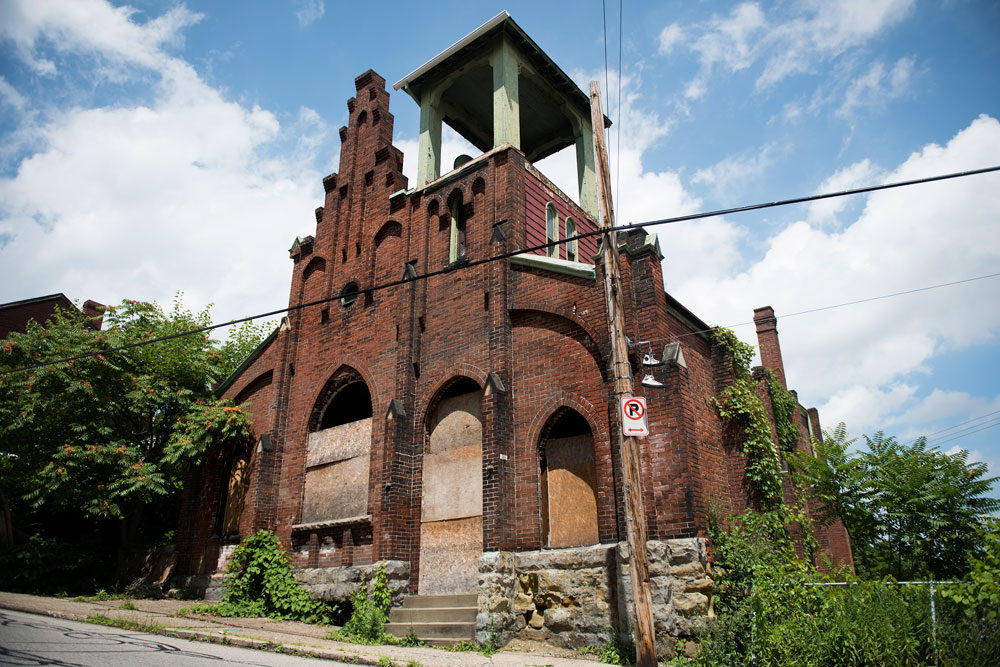
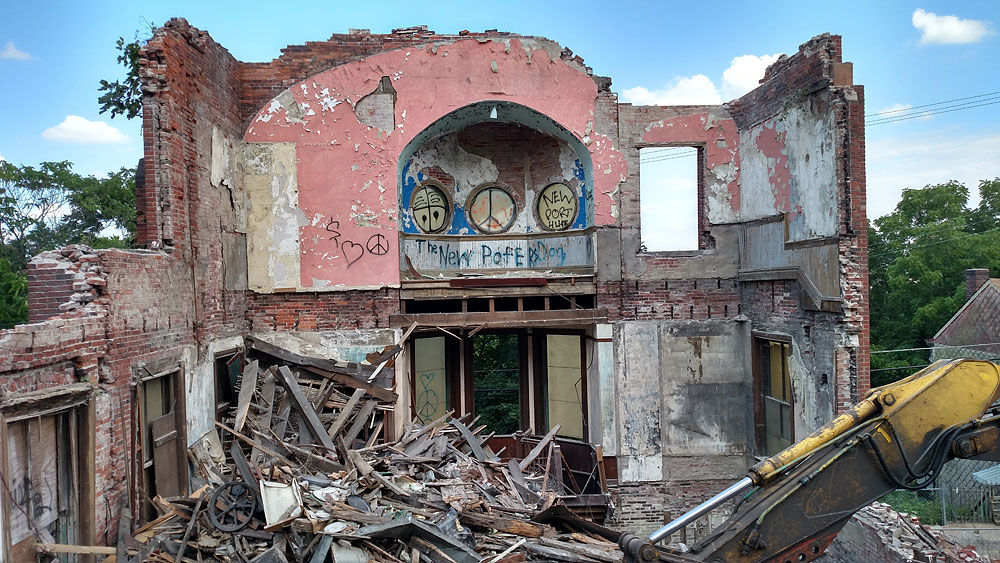
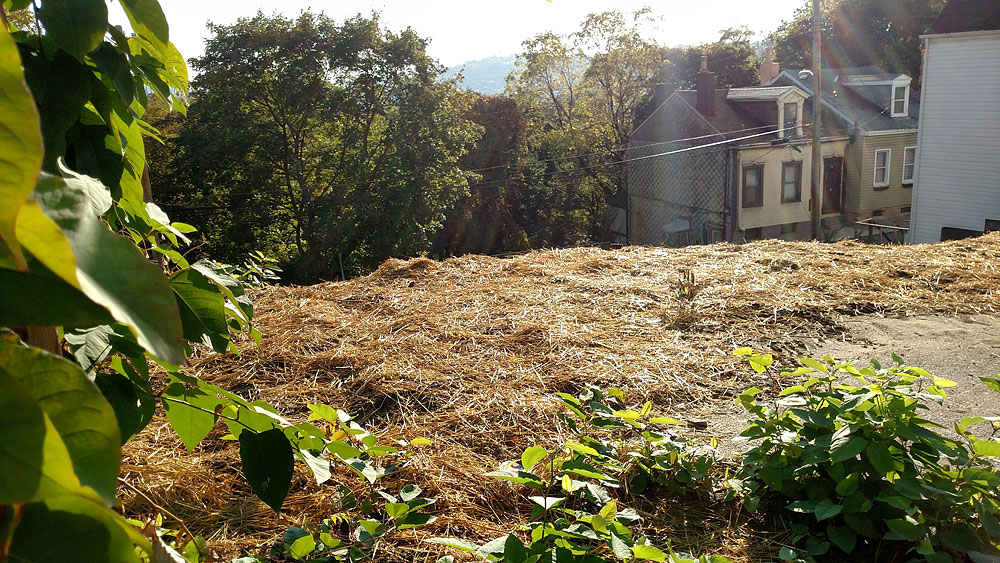
But he acknowledges that the register rarely was used as it was intended “and it began gathering dust on the shelf.”
Not one of more than 40 owners of demolished and remaining buildings in the register contacted by the Post-Gazette had ever been told that their buildings were included on the list. Several said it would have made a difference in determining whether to tear a building down or not.
“I did ask if it was on some historic register because if it was, I wouldn’t want to buy it,” said Ron Samsone, who bought and tore down in 2016 a register-listed, Queen Anne-style home that sat at the corner of Grandview Avenue and McArdle Roadway to make way for a new, modern home for him and his family. “I did get some assurances that it was not on some preservation list.”
Much to some preservationists’ chagrin, the commission in 1994 did not propose any city historic designations with the list, or even varying levels of protection to the buildings and historic districts on the list.
“We didn’t do a levels-of-protection for a reason: At least if it was on the list we felt that that was a sufficient statement that there was historic value of some sort,” Mr. DeSantis said.
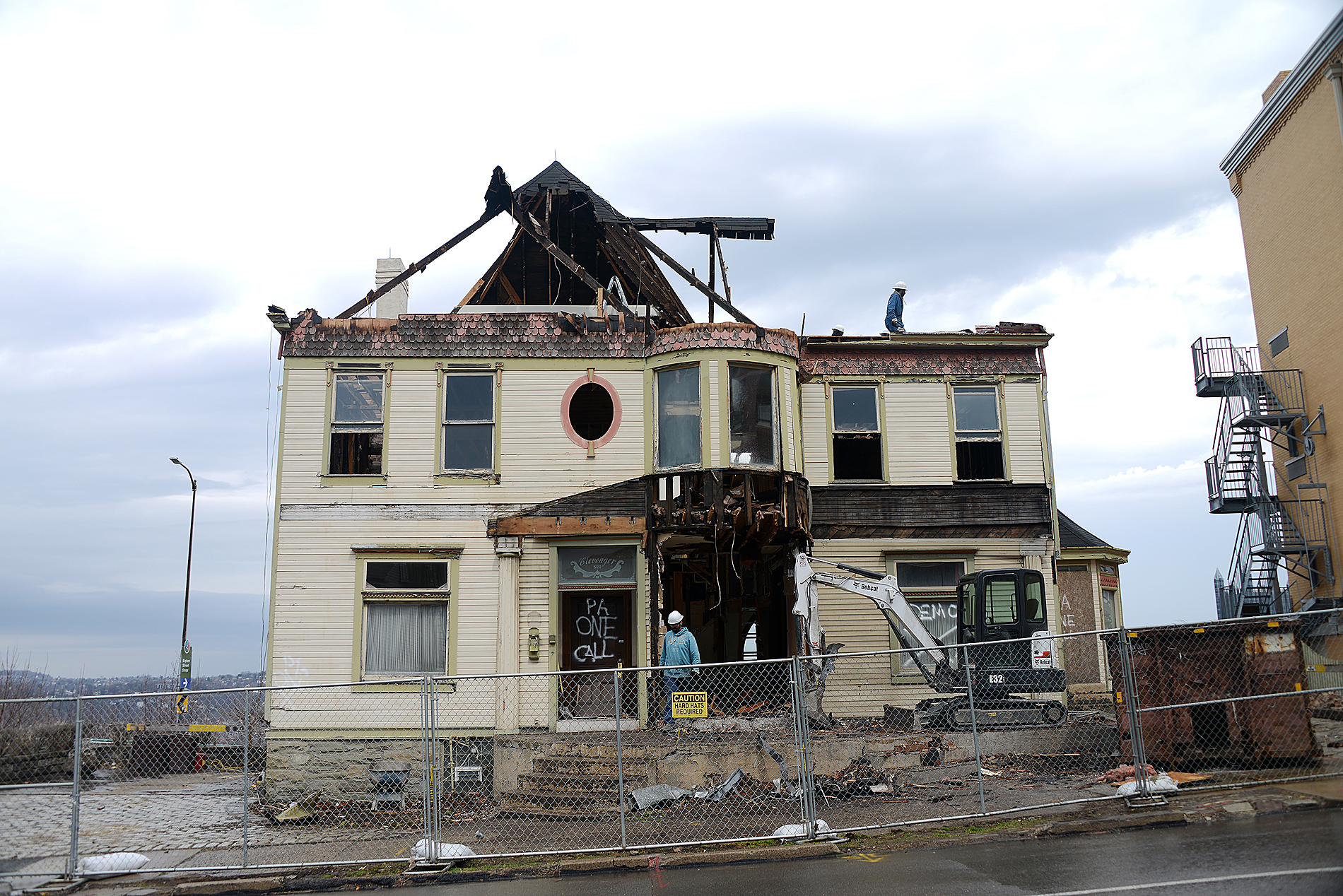
Because it has largely been forgotten, some preservationists downplay the register’s value to the city.
The city’s preservation planner, Sarah Quinn, said the register “was just one of many surveys that have been done by the city and it’s just one point in time.”
There have been other surveys by the city. But they have all involved a more generalized search by taking suggestions from community leaders, or cataloging prominent public buildings like schools or churches. The register remains the only time in the city’s history that it has gone street-by-street to look at every single structure.
“The register stood as a document of what is significant in our community that we are not protecting,” Mr. DeSantis said. “It’s time for us to start protecting it... . How much more are we willing to throw on the fire until nothing is left?”
Sean D. Hamill: shamill@post-gazette.com or 412-263-2579 or Twitter: @SeanDHamill.
Advertisement
Advertisement

